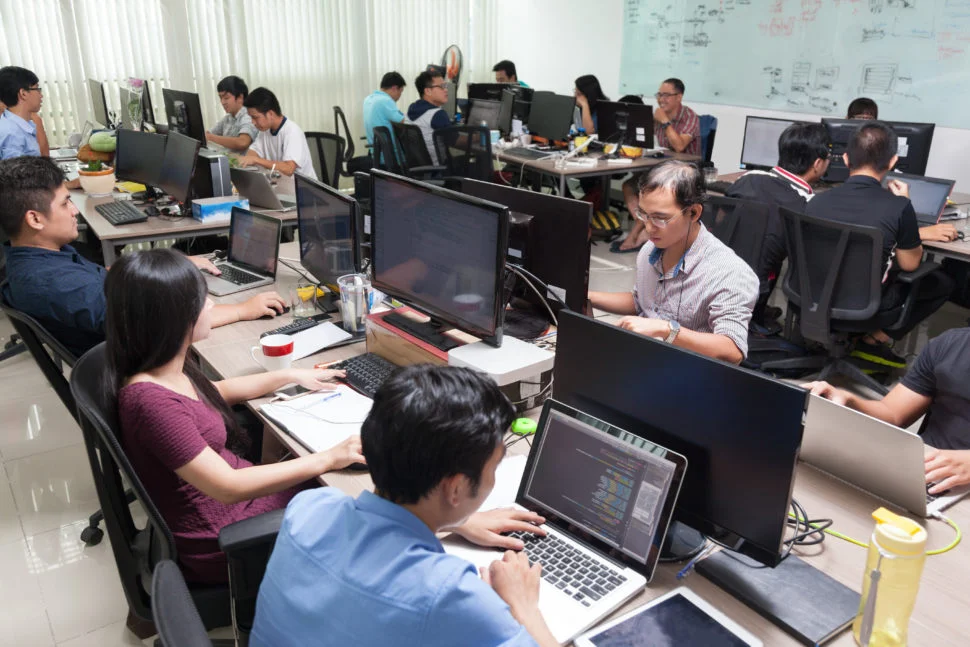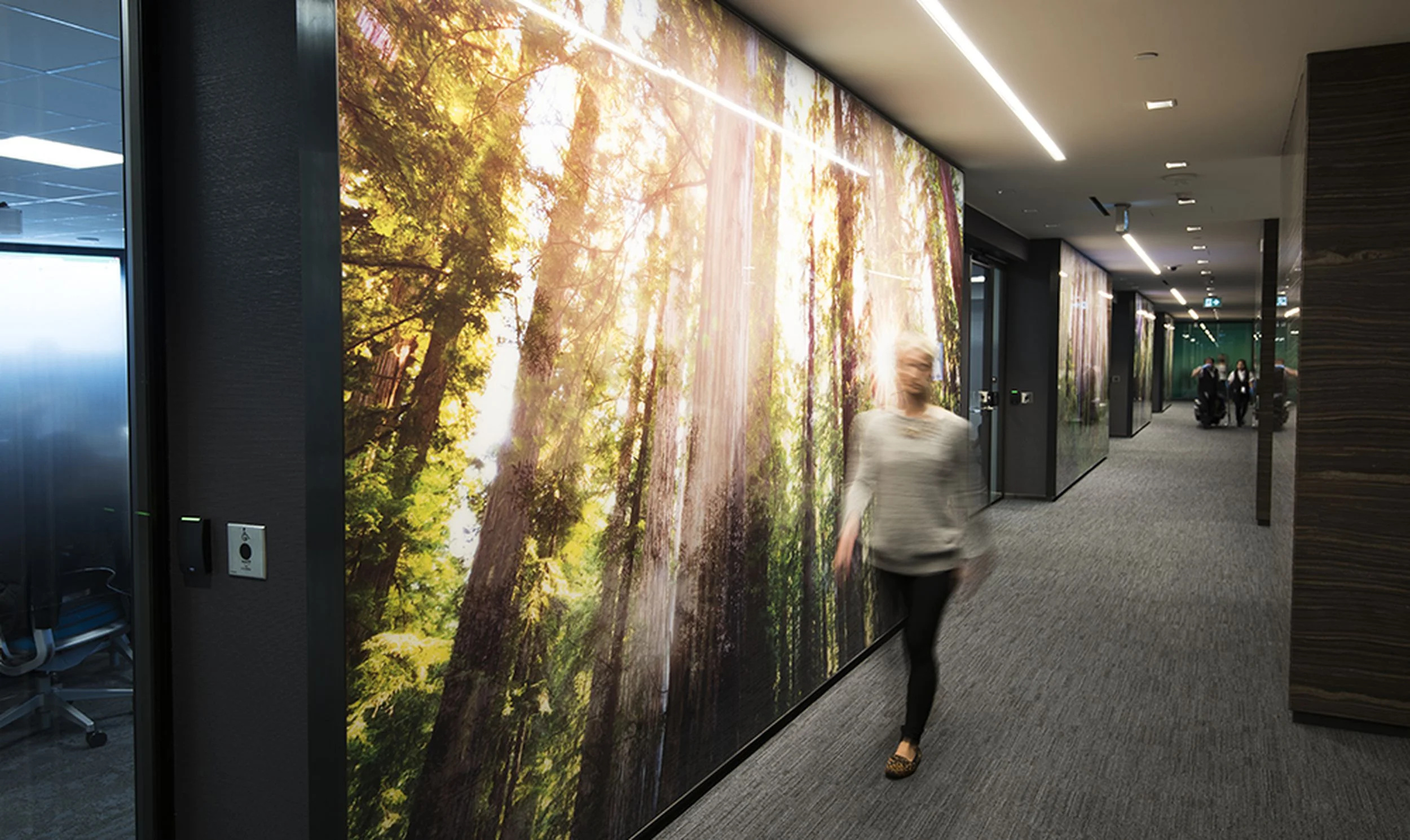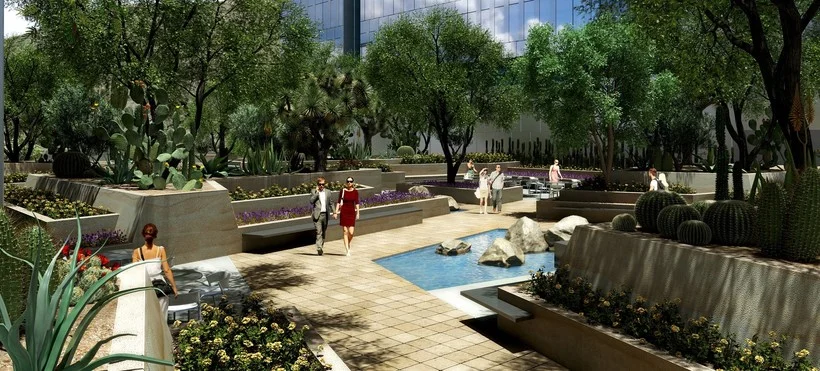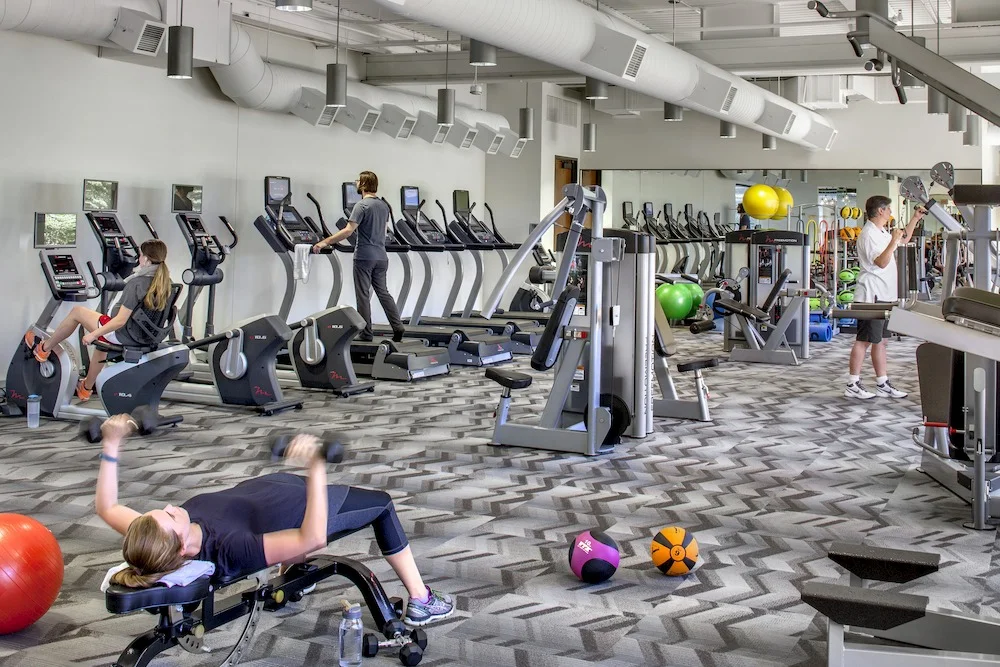What do busy workers need most from their workplaces today? First and foremost, they need it to be human centered; a workplace crafted to mentally excite and engage, physically comfort and emotionally support the people that work there. Although many have predicted the death of the office since mobile technologies allow workers the ability to be productive on the go, people have discovered they need more. Needs for collaboration, team building and individual focus are just a few reasons employees are heavily relying on their office to provide them with access to the people and tools they need to get work done.
Only half of people say they are productive at work
Junior members of the workforce are most likely to be disengaged, demotivated and lacklustre about work according to a survey on happiness in the UK workplace from HR consultancy Personal Group. Based on a survey of 800 people benchmarked against a larger database of 41,000 from the University of Warwick, the survey claims that 48 percent of employees are not often happy at work and that almost one in five are rarely or never happy at work.
Global survey confirms the need for flexible working in order for businesses to thrive
Productivity and teamwork are both significantly improved when employees can choose where they work, a global survey of on global flexible working trends claims. The survey commissioned by Polycom, Inc. a global leader in enabling organizations new levels of teamwork, efficiency and productivity by unleashing the power of human collaboration. The survey of over 24,000 people found that 62 percent of the global working population now take advantage of flexible working practices. Nearly all respondents (98 percent) state that flexible working has a positive impact on productivity. Although many remain concerned that their absence from the office may have a negative effect on their careers, they are drawn to flexible working to increase their productivity, achieve a better work life balance and avoid the problem of commuting.
Listen: Designing the Future of Work with Technology
James Ludwig is vice president, global design and product engineering for Steelcase. 360 recently sat down with James for a two-part discussion on the impact technology is making in the workplace, the kinds of tensions it’s creating for people, how workplace design can help and what we may see in the future of work. Part 1 is all about you — how Smart + Connected Spaces can improve people’s experiences at work.
HOW TO RETAIN TOP TALENT? TAKE A PAGE OUT OF OCLC’S BOOK
In 1997, McKinsey & Company tackled the increasingly competitive employee recruitment and retention landscape in a pioneering study that coined the phrase “war for talent.” Two decades later, the phrase is part of the global management lexicon, and the “war” is even more prevalent: Generational shifts and advances in globalization and technology have made attracting top talent and reducing turnover high priorities for most employers.
Tech turf: Five factors affecting location choice in Asia Pacific
The tech sector is taking off in Asia Pacific. Both start-ups and tech giants are building their presence in the region – whether Facebook and Google in Singapore or Slack and Zen Desk in Melbourne.
Meanwhile, Silicon Valley-like projects have popped up across Asia in cities such as Shenzhen, Bengaluru and Ho Chi Minh.
5 WAYS TO ENHANCE WORKPLACE EXPERIENCE WITH GRAPHICS
The workplace is constantly changing to accommodate a shifting workforce with various expectations and working styles. This accommodation is not only a trend in some workplaces, in many it has become a vehicle to attract and retain the best talent. Through experiential graphic design, we can meet these objectives by enhancing the architectural setting, creating a true sense of place for employees. Additionally, each architectural structure can stand as an extension of an established company brand, values, and culture.
America's Coming Workplace: Home Alone
The trend of American employees working remotely continues to grow, according to Gallup's State of the American Workplace report.
In 2012, Gallup data showed that 39% of employees worked remotely in some capacity, meaning they spent at least some of their time working in a location different from that of their coworkers. In 2016, that number grew by four percentage points to 43%.
NYC Wins First WELL Certified Project
All is well at Structure Tone’s new Manhattan headquarters at 330 W. 34th St. The construction services provider’s 82,000-square-foot home base recently obtained a WELL Certified Silver rating from the International WELL Building Institute (IWBI). The headquarters’ new designation makes it the inaugural project in New York to secure WELL certification under the WELL Building Standard, the first performance-based system for the measuring and accreditation of the built environment’s impact on human health.
The Growing Value of Outdoor Workspace
For years, designers, architects and facility managers have been measuring and improving interior workspace. But, as technology untethers us from set work locations and workplace cultures relax, attention is turning to activate and measure dormant outdoor space with the same fervor. The field of Landscape Architecture no longer is limited to sustainable plantings and beautifully manicured greenspaces. One almost could say the worlds of interior design and landscape architecture are beginning to blur as together, they tackle the new challenge of leveraging outdoor space for optimal engagement and health of workers.
The Workplace Design Element That Can Drive or Hinder Productivity
Sodexo and Quora Consulting partnered to understand what knowledge workers need from their workplace in order to maximize productivity. The report, “Creating a Workplace That Maximises Productivity”, claims that only a third of respondents found the workplace to be configured in such a way that it optimizes productivity. According to the report, “This suggests that unfortunately workplace designers are placing cosmetic design and style over substance.”
DEFINING PRIVACY FOR THE FUTURE OF WORKSPACE DESIGN
The astounding rate of change and complexity in the marketplace in the beginning of the 21st century precipitated a shift toward barrier-free workplace design. Many business leaders believed that collaboration, fostered by open-plan workspaces, would stimulate the innovation required to meet the needs of the changing marketplace. However, the need for privacy in the workplace has curbed the appetite for the open-plan workspace. Today, workspace design client-facing focus groups hear these complaints more than in previous years: “I just don’t have time to think!” Or, “It’s too distracting to think.”
Biz & Tech Future Apple, Google campuses go for workplace glamour
Next month, Apple will inaugurate its circular “spaceship” campus, an eye-catching Cupertino landmark that will house some 12,000 employees of the world’s most valuable company under a single roof.
About 10 miles away in Mountain View, Google is moving past the planning stage for a futuristic campus that, when it opens in 2019, will be the first major real estate project the search engine giant has built from scratch. The central building, which resembles a puffy white cloud, will be along a bicycle and pedestrian path that connects Google’s other offices.
Workplace design alone cannot motivate us or make us happy at work
There’s a good reason why we find it hard to establish the causal links between our working lives and our personal happiness. It’s because it’s all very complicated. So complicated in fact that you can sidetrack any discussion on the subject by asking elementary questions such as: ‘what do you mean by happy?’ or ‘should it be the role of work to make us happy?’ A lot of commercial interests in the workplace sector would like us to think that there is a correlation between what they do and how happy people are at work, but the research shows that things are never that straightforward. It all depends not just on a stimulus but how we choose to respond to it. One thing that seems evident is that the design of the workplace would be characterized as a ‘hygiene factor’ according to the work of Frederick Herzberg dating from the 1950s, which explained why the things that motivate us are not the mere opposites of those which make us unhappy.
How to Create Productive Workspaces for Your Company
In recent years, the physical design of the typical workplace has undergone significant change. Many organizations have shifted from individual cubicles and private offices to open-plan designs, and have implemented features like standing desks and whiteboard walls to emphasize increased focus, teamwork and flexibility.
While the perfect workspace must be unique when it comes to any particular business, there are common steps that every organization can take to realize its ideal environment.
Here's How Self-Service Is Changing Your Workplace
Five years ago, Marc Andreeson predicted that software would eat the world. As a testament to that prediction, self-service is rapidly taking over.
As technology advances, what will office space of the future be like?
While we’re a long way off hologram-only meetings or humanoid robot supervisors patrolling office space, automation and AI are already transforming aspects of business. It’s hardly hot news that the office space era of nine-to-five, fixed desks, and water cooler moments’ is drawing unceremoniously to a close, replaced by a mixture of flexible, remote and distributed working.
Wellness in 2017: Creating a Culture for Wellness
Well networked and armed with multiple devices, today’s professional is always connected but admittedly stressed, as the hazy line between personal and professional life continues to fade and the pressures of each impinge on the other. But research confirms that a work environment focused on wellness, with real opportunities for engagement and wellbeing, can make a difference to mitigate stress, improve health, focus attention, and increase productivity.
How to Make 2017 Healthier at Work
It’s only a few weeks into the year and some of us have already let our New Year’s resolutions slide. Luckily, for those searching for a healthier lifestyle this year, the workplace can bring resolution success.
Organizations across the world have an increased desire to improve employee wellbeing. But, it’s not just moving more and sitting less, leaders are now taking an interest in the holistic wellbeing of their people — their physical, cognitive and emotional wellbeing. Science tells us physical, cognitive and emotional wellbeing are linked, and improving holistic wellbeing in the workplace will lead to a better workday and better work performance.
A new approach to office design is redefining our relationship with property
At the end of the 18th Century it was becoming apparent that overpopulation was something the human race would need to address for perhaps the first time. Advances in technology and the urbanization that followed the Industrial Revolution had created a new set of challenges. These were most famously laid out in a 1798 book called An Essay on the Principle of Population, written by an English cleric called Thomas Malthus. The book helped to influence the nascent discipline of economics and informed the thinking of Charles Darwin when he wrote On The Origin of Species some sixty years later. The term Malthusian remains in use to this day when describing the central paradox laid out in the book. This paradox suggests that because population increases geometrically (doubling every 25 years by multiplication), while food production only grows arithmetically (by addition), the end result can only be depressed wages and ultimately starvation.

























